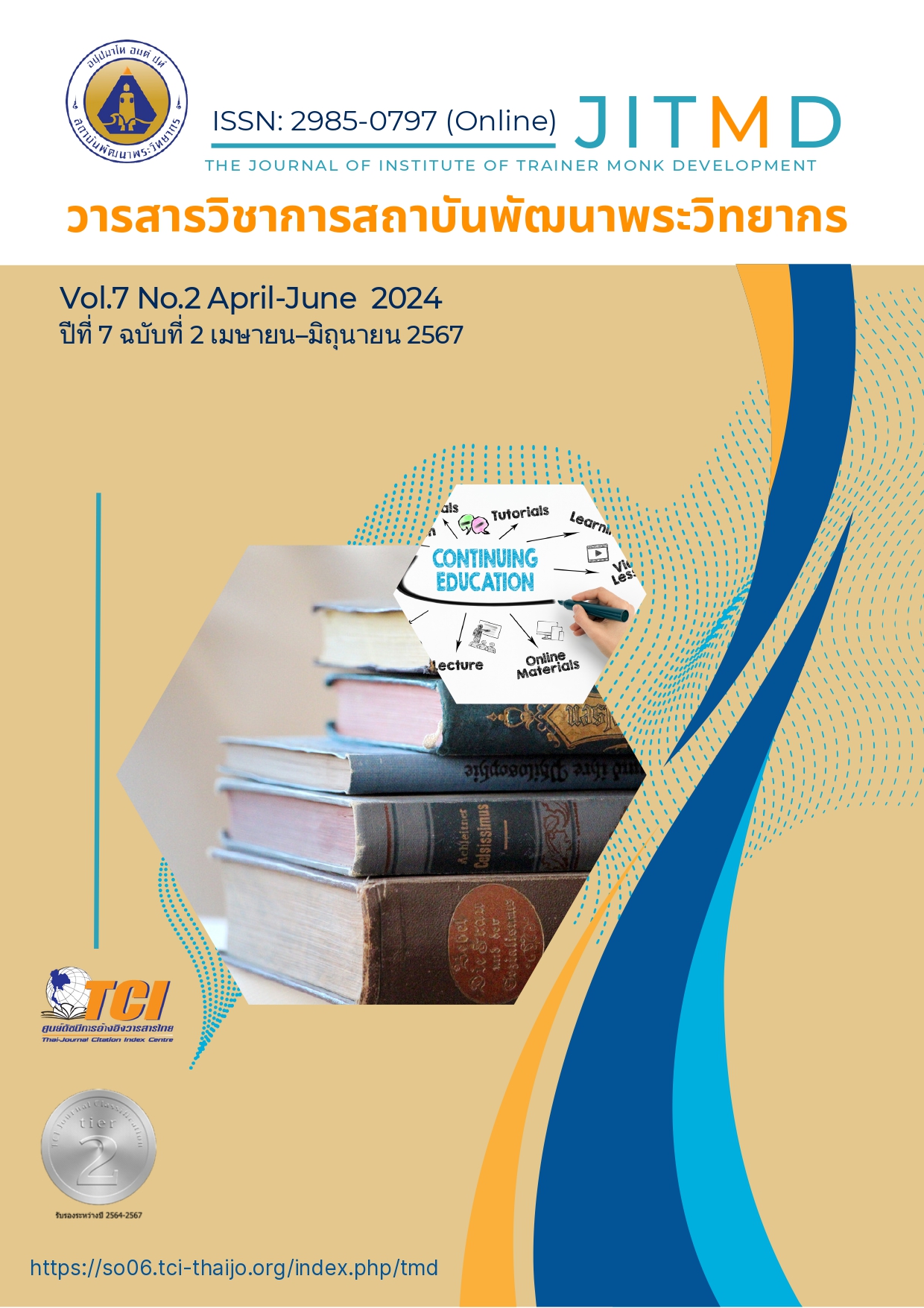Evaluation of Energy and Environmental Conservation Program of 2 Ratchananthajarn Samsenwittayalai School
Main Article Content
Abstract
This research aims to evaluate the school energy and environmental conservation project at 2Ratchananthajarn Samsenwittayalai School. It consists of three aspects: 1) the congruence, suitability, readiness, and adequacy of the project's input/resources related to energy and environmental conservation in the school, 2) the appropriateness of the activities within the project, including identifying problems, obstacles, and problem-solving strategies, and 3) the outcomes of the project's implementation in terms of production and results. The research population includes school administrators, teachers in charge of the project, teachers, students, and parents. The data collection tools consist of interviews, questionnaires on energy and environmental conservation awareness, satisfaction with the project, and data recording forms. Data analysis involves frequency, percentage, and content analysis. The evaluation findings indicate that in terms of the project's input/resources, there is a high level of congruence, suitability, readiness, and adequacy, meeting the evaluation criteria for all three aspects. Regarding the implementation of various activities within the project, they are deemed appropriate, meeting the evaluation criteria for both aspects, namely adherence to the planned activities and effective problem-solving. Regarding the project's outcomes, it is observed that all objectives of the project are achieved, as students and teachers demonstrate knowledge, appreciation, and behavior in energy and environmental conservation at a high level. Additionally, stakeholders, including school administrators, teachers in charge of the project, teachers, students, and parents, express a high level of satisfaction with the project, and there is a noticeable reduction in electricity and water consumption, as well as a decrease in waste generation.
Article Details

This work is licensed under a Creative Commons Attribution-NonCommercial-NoDerivatives 4.0 International License.
บทความที่ได้รับการตีพิมพ์เป็นลิขสิทธิ์ของวารสารวิชาการสถาบันพัฒนาพระวิทยากร
ข้อความที่ปรากฎอยู่ในบทความที่ได้รับการตีพิมพ์ในวารสาร ถือเป็นความรับผิดชอบของผู้เขียนบทความ และข้อคิดเห็นนั้นไม่ถือว่าเป็นทัศนะและความรับผิดชอบของกองบรรณาธิการวารสารวิชาการสถาบันพัฒนาพระวิทยากร
References
กระทรวงศึกษาธิการ. (2565). นโยบายและจุดเน้นของกระทรวงศึกษาธิการ ปีงบประมาณ 2565. สืบค้นข้อมูลเมื่อ 21 มีนาคม 2565 จาก https://www.moe.go.th.
ชาตรี ลุนดำ และคณะ. (2557). กระบวนการเสริมสร้างจิตสำนึกของบุคลากรและนักศึกษาคณะเทคนิคการแพทย์ ด้านการอนุรักษ์พลังงานและสิ่งแวดล้อม. Mahidol R2R e-Journal, 1(2): 31-45.
ทิศนา แขมมณี. (2560). ศาสตร์การสอน องค์ความรู้เพื่อการจัดกระบวนการเรียนรู้ที่มีประสิทธิภาพ. กรุงเทพมหานคร: สำนักพิมพ์แห่งจุฬาลงกรณ์มหาวิทยาลัย.
ยุทธศาสตร์ชาติ (พ.ศ.2561-2580). (2561, 13 ตุลาคม). ราชกิจจานุเบกษา. เล่มที่ 135. ตอน 82 ก, หน้า 52.
สาธิตา สำราญรมย์. (2553). “การพัฒนาแบบวัดจิตสำนึกการอนุรักษ์ทรัพยากร สำหรับนักเรียนชั้นมัธยมศึกษาปีที่ 3 โรงเรียนสังกัดกรุงเทพมหานคร”. วิทยานิพนธ์การศึกษามหาบัณฑิต.สาขาวิชาการวัดผลการศึกษา. บัณฑิตวิทยาลัย: มหาวิทยาลัยศรีนครินทรวิโรฒ.
อรวรรณ บุญส่ง. (2551). “ผลการพัฒนาจิตสํานึกในการอนุรักษ์และพัฒนาสิ่งแวดล้อมของนักเรียนชั้นมัธยมศึกษาที่ 3 โดย ใช้กิจกรรมสิ่งแวดล้อมศึกษาประกอบการประเมินตามสภาพจริง”. วิทยานิพนธ์การศึกษามหาบัณฑิต. สาขาวิชาการวัดผลการศึกษา. บัณฑิตวิทยาลัย: มหาวิทยาลัยศรีนครินทรวิโรฒ.
Krejcie, R. V. and Morgan, D. W. (1970). “Determining Sample Size for ResearchActivities.” Educational and Psychological Measurement, 30(3): 607-610.


